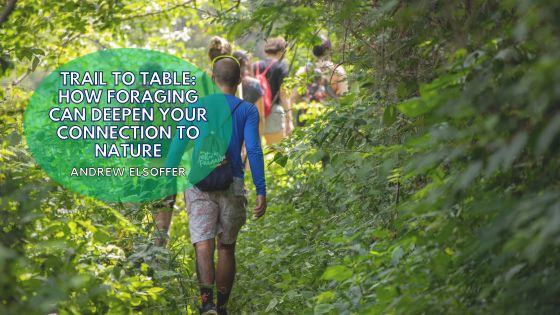Spending time outdoors offers a powerful reset for the mind and body, but foraging adds another level of engagement with the natural world. Foraging—the practice of gathering wild, edible plants, mushrooms, and herbs—connects us to the land in a more personal, purposeful way. It transforms a walk in the woods into a hands-on exploration of ecology, flavor, and self-sufficiency.
Foraging is not a new trend. It’s a practice rooted in human history, once essential for survival. Today, it is reemerging not out of necessity, but out of a desire to reconnect with nature, reduce reliance on packaged foods, and learn more about the environment. The trail becomes more than a scenic route; it becomes a source of nourishment, discovery, and mindfulness.
One of the most rewarding aspects of foraging is how it slows you down. In a fast-paced world, foraging encourages you to pause and observe your surroundings with fresh eyes. Suddenly, a patch of greenery isn’t just “some weeds”—it’s wild mint or chickweed. A fallen log might be home to wood ear mushrooms or turkey tail fungus. This attentiveness fosters a deeper respect for the land and its seasonal rhythms.
Foraging also nurtures a sense of curiosity and continuous learning. Identifying edible plants safely requires research, caution, and often guidance from local experts. Over time, you begin to understand the subtle differences between species, their preferred habitats, and how to harvest responsibly. Ethical foraging emphasizes sustainability: take only what you need, leave plenty behind, and avoid endangered or overharvested species.
Another benefit of foraging is the “trail to table” experience. There’s something incredibly satisfying about incorporating wild ingredients into a meal. Whether it’s a salad dressed with wild garlic mustard, a tea brewed from foraged nettle, or a dessert topped with fresh berries picked from the trail, the food you’ve gathered carries a story. It’s a reminder of where it came from, the effort it took to find, and the natural beauty that made it possible.
For those new to foraging, safety is key. Start small and stick to a few easily recognizable plants like dandelion, purslane, or blackberries. Use reputable field guides or take a local class to gain confidence. Some areas may have regulations about harvesting on public lands, so it’s important to know the rules before you begin.
Ultimately, foraging isn’t just about food. It’s about connection—to the land, to the seasons, and to a simpler, more intentional way of being outdoors. In an age when nature is often experienced through screens or scheduled hikes, foraging invites you to slow down and engage with your environment in a way that is both ancient and refreshingly modern.
Trail to table is more than a culinary concept—it’s a mindset. And once you’ve tasted the wild, you may never look at the woods the same way again.

